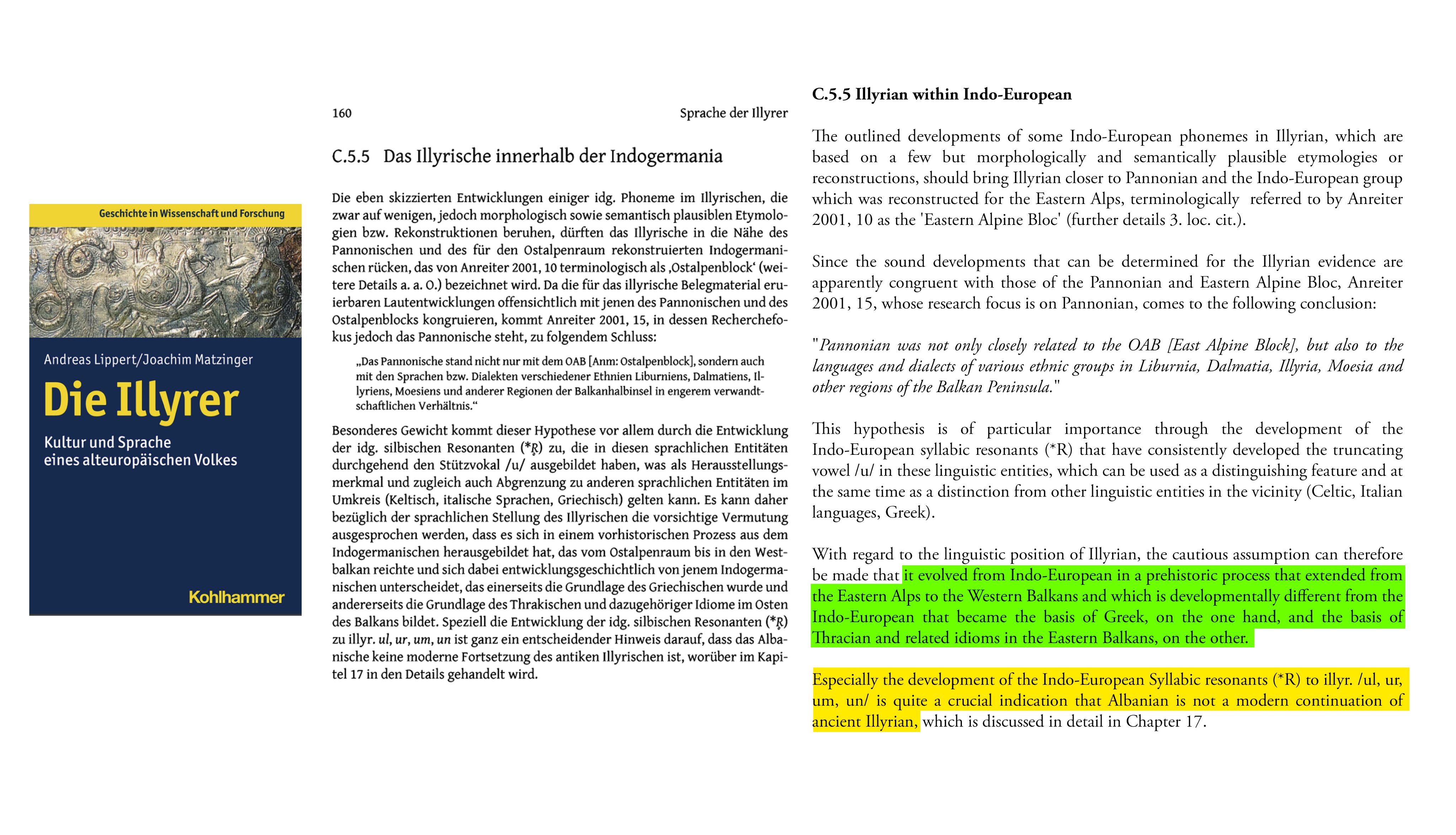torzio
Regular Member
- Messages
- 3,976
- Reaction score
- 1,236
- Points
- 113
- Location
- Eastern Australia
- Ethnic group
- North East Italian
- Y-DNA haplogroup
- T1a2 - SK1480
- mtDNA haplogroup
- H95a
From the new Austrian Archaeological & Linguistic book dedicated to the Illyrians:
Matzinger argues that Illyrian descended from the Indo-European "East Alpine Block", which extended from the Eastern Alps of Italy into the Western Balkans,
He argues that the Albanian language is NOT from this group.
'"With regard to the linguistic position of Illyrian, the cautious assumption can therefore be made that it evolved from Indo-European in a prehistoric process that extended from the Eastern Alps to the Western Balkans and which is developmentally different from the Indo-European that became the basis of Greek, on the one hand, and the basis of Thracian and related idioms in the Eastern Balkans, on the other.
Especially the development of the Indo-European Syllabic resonants (*R) to illyr. /ul, ur, um, un/ is quite a crucial indication that Albanian is not a modern continuation of ancient Illyrian, which is discussed in detail in Chapter 17."


I agree with matzinger

